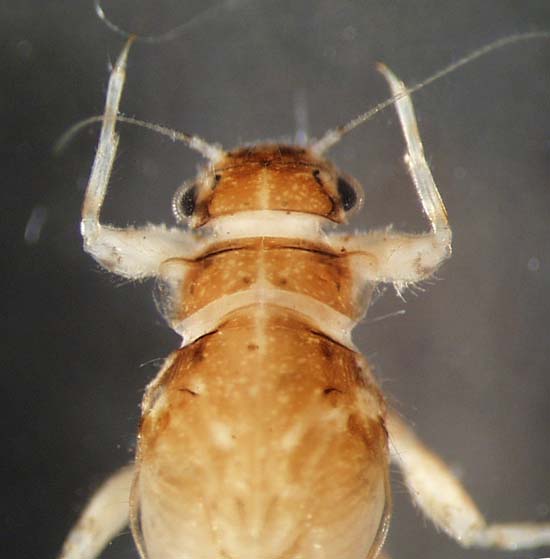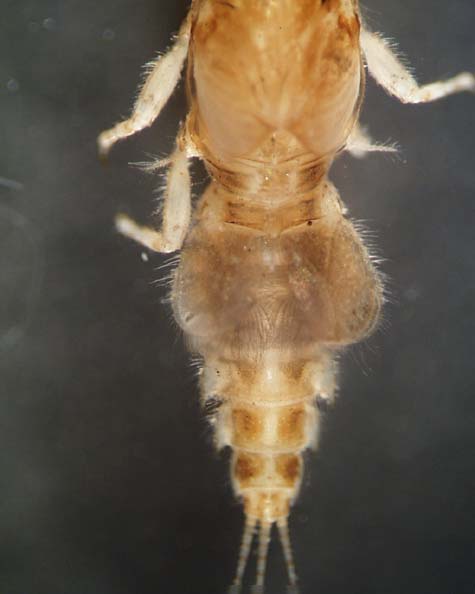
THE XERCES SOCIETY FOR INVERTEBRATE CONSERVATION Aquatic Invertebrates in Pacific Northwest Freshwater Wetlands |
| Identify taxa |
Caenidae (Small square-gill mayfly) |
|||
|
The small square-gill mayflies may be the most abundant mayflies in some ponds and lakes, where they feed on decaying plant material and some diatoms and other algae. They sometimes live in the silt along stream margins and in pools or slow water. Caenids are distinguished by the small, square, plate-like (operculate) gills that overlap slightly and cover their succeeding pairs of gills. Caenids are often found in organic debris, and these operculate gills can help keep the other gills free from silt. Caenids are also somewhat hairy, and often trap organic debris against their bodies, further camouflaging these already small, slow, nondescript mayflies. |
|
Size: small to medium Identifying feature(s): no gills on first abdominal segment; gills on the second abdominal segment are large and square and cover the other gills; 3 cerci Habitat: wetlands - slow water, silt along stream margins, pools |
 |
|
© 2007 Xerces Society
Contact info@xerces.org


